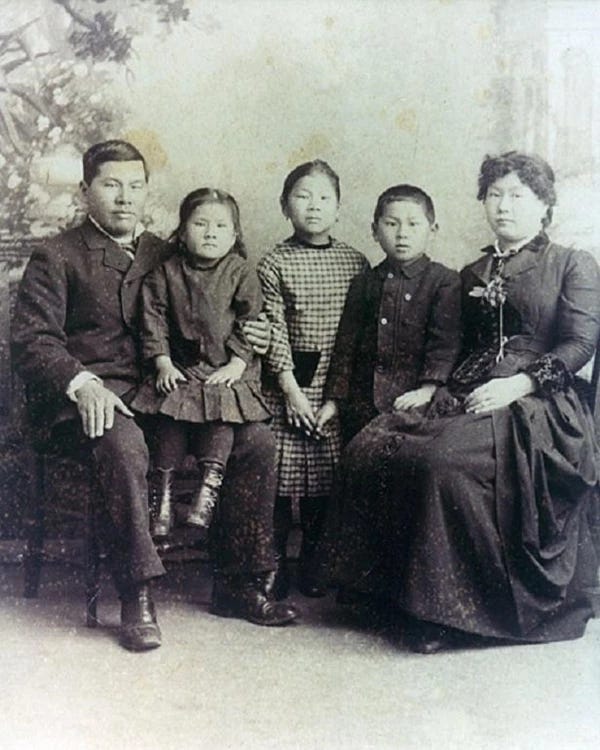Mary Tape rejected the adage, "that's just the way it is." And she wasn't one to cower in the face of conflict. So when a public school in San Francisco refused to admit her daughter because of the Tape family's Chinese heritage, Mary challenged the decision. Her fight would ultimately reach California's Supreme Court.
Born near Shanghai, China in 1857, Mary braved the seven-thousand-mile journey from China to San Francisco without her family at the age of just eleven. It's not clear why she moved alone, but she arrived in 1868 to a rapidly changing city. Less than two decades earlier, the discovery of gold a short distance away at Sutter's Mill turned San Francisco into a thriving commercial district with a growing population. Between 1860 and 1870, the city's population increased from 56,802 to 149,473.
While not necessarily coming for the gold rush, Chinese immigrants were also becoming a core part of the San Francisco and California story. By the time Mary arrived, they had already made significant contributions to the development of the young state. Chinese people helped build railroads, worked in the fields, started new businesses, and brought new cultural life. And in San Francisco, their population had grown from about 2,719 in 1860 to 12,030 in 1870.
Yet, despite these contributions, Chinese communities often faced animosity and racism and were subject to unfair treatment. America’s economy was shifting from agricultural and small-business roots toward a new era of industrial expansion and wage labor. Hard-working and cheaper immigrants meant job loss for many. Cultural prejudice only deepened these fears. All this led to America's first immigration restriction by nationality when the Federal government passed the Chinese Exclusion Act of 1882, which banned immigration of Chinese workers.
These larger issues were not yet a concern to Mary upon arriving. She had to find food and shelter. Fortunately, within a few months, she was taken in by the Ladies’ Protection and Relief Society, an organization that cared for abandoned and orphaned girls. There, she learned English, American customs, and skills like sewing and domestic work. While she took pride in her Chinese roots, she wanted to be an American and learn the country's way of life.
In 1875, Mary married Joseph Tape, whose given name was Jeu Dip, a Chinese immigrant who worked as a house servant and then delivered milk from his employer's dairy farm. He later opened his own delivery service catering to Chinese merchants. Together, Mary and Joseph built a life that was unthinkable for many other Chinese immigrants at the time. They raised four children in a comfortable house in San Francisco, far from the tenements of Chinatown. They had many non-Chinese friends and spoke English at home, hoping to secure a future for their children beyond the narrow paths allotted to Chinese families. As Mary would later write, "We have always lived as Americans, and our children have been brought up to consider themselves as such."
Yet, the culture, in many ways, was simply the way it was. And when the couple attempted to send their eight-year-old daughter, Mamie, to a local public school, she was promptly rejected.
Keep reading with a 7-day free trial
Subscribe to Historical Snapshots to keep reading this post and get 7 days of free access to the full post archives.




